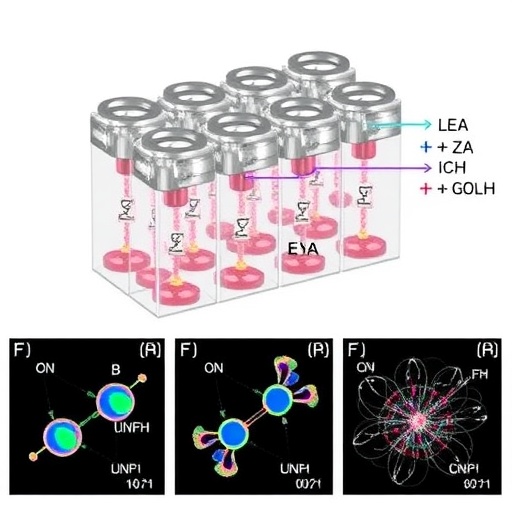
In the realm of energy storage, particularly lithium-ion battery technology, advancements are necessary to meet the ever-increasing demands for portable energy solutions. The quest for high-performance cathode materials continues to gain momentum, and recent research highlights an innovative approach using zinc-doped lithium iron phosphate (LiFePO4). This cutting-edge study reveals not only the synthesis process of Zn²⁺-doped LiFePO₄ but also its enhanced electrochemical performance, presenting a promising option for next-generation batteries.
Lithium-ion batteries are integral to numerous applications, ranging from consumer electronics to electric vehicles, underscoring the necessity for materials that offer increased efficiency and stability. The performance of cathodes—key components in these batteries—is critical to achieving longer life cycles and faster charge-discharge rates. Consequently, researchers have been exploring various doping strategies to optimize the structural and electrochemical properties of common cathode materials. The introduction of zinc into LiFePO₄ represents a transformative step in this ongoing effort.
The study conducted by Liu et al. showcases an innovative synthesis method for producing Zn²⁺-doped LiFePO₄. The researchers employed a co-precipitation technique, which allows for a homogenous distribution of zinc ions within the cathode material. This methodological approach ensures that the structural integrity of the lithium iron phosphate lattice is maintained while enabling the incorporation of zinc. By controlling the doping levels, the researchers could systematically investigate the influence of zinc on the electrochemical characteristics of the cathode.
Electrochemical performance is paramount for any battery material, and the findings from this research are encouraging. The Zn²⁺-doped LiFePO₄ exhibited superior electrochemical behavior compared to its undoped counterpart. Specifically, the doping enhanced electrical conductivity, which is often a limiting factor in the cycling performance of battery materials. As the demand for high-rate performance batteries grows, the development of materials that can sustain rapid charge-discharge cycles is crucial. The Zn²⁺ doping significantly improves the lithium-ion diffusion kinetics, resulting in faster charge and discharge rates.
Furthermore, the stability of the cathode material is essential. The research indicates that Zn²⁺ doping contributes to better structural stability during electrochemical cycling. This stability is vital for maintaining the capacity and overall performance of the battery over prolonged use. The lessened degradation of the doped material translates to a longer lifespan for batteries, which is an attractive feature for commercial applications.
Notably, the work by Liu and colleagues does not just demonstrate improved performance metrics; it also provides insights into the mechanisms behind the enhancements observed. By analyzing changes at the atomic level, the researchers elucidate how zinc ions influence the electronic structure of LiFePO₄. Understanding these mechanisms allows for the rational design of future cathode materials, paving the way for further innovations in battery technology.
As electric vehicles gain traction and the need for efficient energy storage solutions intensifies, research like this becomes increasingly critical. The implications of enhanced lithium-ion battery performance extend beyond consumer electronics and into renewable energy sectors, where efficient energy storage is imperative for grid stability and integration of intermittent renewable sources.
The findings present an optimistic outlook on the potential applications of Zn²⁺-doped LiFePO₄. While the research establishes a solid foundation for further development, extensive testing and refinement are necessary before commercial deployment. The path ahead will involve assessing the scalability of the synthesis process as well as long-term performance evaluations in real-world scenarios.
In conclusion, the synthesis and characterization of Zn²⁺-doped LiFePO₄ demonstrate a significant leap forward in cathode material development for lithium-ion batteries. This research not only showcases the enhanced electrochemical performance achievable through innovative doping strategies but also highlights the potential for scalable applications in the burgeoning field of energy storage solutions. Further investigations and refinements will undoubtedly contribute to the advancement of battery technology, aligning with global initiatives to transition towards sustainable energy practices.
The development of high-performance, stable, and efficient battery materials is vital as we strive to meet the evolving demands of energy storage. This study provides a promising avenue for future research, ensuring that as technological advancements continue to unfold, we will have the requisite materials to support them adequately.
The interplay between technology and energy storage shapes our modern world and drives us towards a more sustainable future. Innovations like the Zn²⁺-doped LiFePO₄ will play an essential role in enabling this transition, underscoring the importance of ongoing research in the science of batteries.
In a rapidly advancing technological landscape, the future of lithium-ion batteries may be brighter than ever, thanks in part to breakthroughs like those presented by Liu et al. The ongoing research not only reinforces the importance of cathode materials in battery technology but also encourages a collaborative approach among scientists to tackle the pressing challenges associated with energy storage.
As we reflect on these advancements, it becomes clear that the combination of innovative materials, rigorous scientific inquiry, and the relentless pursuit of performance improvements will chart the course for the future of battery technologies. The era of high-rate and stable cathode materials is on the horizon, fueled by discoveries that reshape our understanding and capabilities within the energy storage domain.
In light of these developments, we eagerly anticipate future studies that will further explore the potentials of doped materials, ushering in a new age of lithium-ion batteries optimized for high performance and sustainability.
Subject of Research: Development of zinc-doped lithium iron phosphate for battery applications
Article Title: Synthesis and electrochemical performance of Zn2+-doped LiFePO4: towards high-rate and stable cathode materials for lithium-ion batteries
Article References: Liu, R., Guo, N., Luo, G. et al. Synthesis and electrochemical performance of Zn2+-doped LiFePO4: towards high-rate and stable cathode materials for lithium-ion batteries. Ionics (2025). https://doi.org/10.1007/s11581-025-06648-9
Image Credits: AI Generated
DOI: https://doi.org/10.1007/s11581-025-06648-9
Keywords: Lithium-ion batteries, Zn²⁺-doped LiFePO₄, lithium iron phosphate, high-rate performance, electrochemical stability, energy storage technology.
Tags: cathode material optimizationco-precipitation synthesis methoddoping strategies in batterieselectric vehicle battery advancementselectrochemical performance enhancementEnergy Storage Solutionshigh-performance battery cathodesLiFePO4 structural integritylithium-ion battery technologynext-generation battery materialsportable energy applicationszinc-doped lithium iron phosphate





